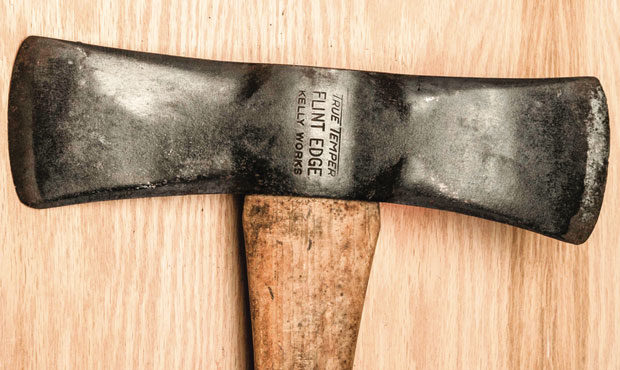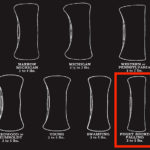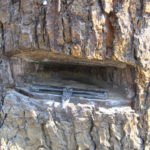All Over The Map: The axe that almost made Puget Sound famous
May 14, 2021, 4:52 PM | Updated: 4:55 pm
In the 19th century, an essential piece of logging equipment was developed along the shores of – and named for – an iconic Northwest body of water.
All Over The Map readers may recall when we tracked down the actual guy who named the Buick Rainier SUV.
We’ll also admit to having tried and failed to do the same for the Toyota Tacoma.
“We’ve been searching around the company for anyone with specific knowledge about how the ‘Tacoma name came about’ – unfortunately, there’s not a lot of institutional knowledge that dates back 15 years for us to tap into,” a media relations person from Toyota wrote in an email to KIRO Radio a few years ago.
And, much closer to home, we struck out just this week on the true origins of Costco’s Kirkland Signature brand name. Media relations staff at the gargantuan wholesaler responded to an inquiry by sending boilerplate marketing language – the superscript “tm” trademark abbreviation was a dead giveaway:
“In 1995 Costco began the Kirkland Signature™ line after recognizing a need for quality goods at a great value. In all cases, products bearing the Kirkland Signature label are focused on exceptional quality and value. The name Kirkland Signature originated due to Costco’s home office being located in Kirkland, Wash., at the time.”
In response to a follow-up question for additional details that might name the individuals involved in coming up with the name or maybe revealing if there had been other names besides Kirkland Signature that were considered, this same staffer replied, “There is no other information on the subject.”
Doesn’t everyone want to know the stories behind the names of nationally-known products that are inspired for Northwest places?
Fortunately, experts on today’s topic were much more forthcoming than Toyota and Costco.
The piece of essential logging equipment in question is called a “Puget Sound Falling Axe” – falling as in falling, or felling, or cutting down trees. It’s a specially designed axe that is believed to have been developed somewhat organically, right here in Western Washington, in the pre-mechanized days of logging, perhaps as far back as the 1860s.
More than a hundred years ago – and maybe as recently as the 1950s, when chainsaws displaced axes and handsaws – several manufacturers, mostly in the eastern United States, were making and selling them to loggers in the Northwest as well as other parts of North America. There are old catalogs that show “Puget Sound Falling Axes” alongside other regional tools named for places where men once chopped or sawed down trees by hand, such as Jersey, Michigan and even Long Island.
The head of the Puget Sound Falling Axe is made of tempered steel, and weighs between 3 and 5 pounds. It’s a double-bit axe, which means it has a blade on either end. In this regard, the Puget Sound Falling Axe isn’t much different from other axes.
However, once the design of the Puget Sound axe is pointed out, it’s hard to not see just how different they are from other lumber tools in the catalog (or in the woods). First, the blade is long, at least 12 inches, or maybe as long as 14 inches, from the edge of one bit to the edge of the other bit. Looking at it in profile, from top to bottom, it also looks narrower than most other axes, maybe 4 inches high.
The standard hickory handle on a Puget Sound is a little different, too – it’s longer. Most regular axes were issued with 36-inch handles; the Puget Sound Falling Axe usually has at least a 42-inch handle, or sometimes the handle is as long as 48 inches.
Just how – and why – would an axe like this be developed in lumber camps around Puget Sound 150 years ago?
KIRO Radio asked Tom Allyn, a Maple Valley man who collects axes and who knows a lot about their history and how they work.
“These logging camps all had a blacksmith in camp, because you needed one just to maintain all your logging tools and your digging tools,” Allyn told KIRO Radio. “Everyone’s working with these big old iron tools, and you need to maintain them.”
And, before a factory could turn them out back east, it was a blacksmith who was likely first to create what became the Puget Sound Falling Axe. But the basic design had to come from somewhere. Allyn says the inspiration, not surprisingly, was likely the trees of Puget Sound themselves.
The timber here in the Northwest – Washington, Oregon, British Columbia – in the 19th century was significantly bigger than in most other parts of the country, Allyn says. That’s why a longer handle was useful – it gave a logger more reach across a wide tree trunk. And, because the big cedar trees in the Northwest often grew from stumps and “nursery trees,” this meant that, in order to cut a big tree down by hand, loggers needed to get many feet above a very complex and sometimes rotted stump. This meant cutting holes or notches into the trunks of trees at shoulder level or higher to place springboards, those planks that functioned as scaffolding-like temporary structures for loggers to stand on and use a crosscut saw to cut down a tree. Even in 2021, evidence of old springboard notches are visible on stumps along trails and on the edges of campgrounds all over the Northwest.
Those springboard notches, Allyn believes, are key to why the Puget Sound Falling Axe is shaped the way it is. With a long, narrow bit (or blade), the shape and length mimic a carpenter’s mortising axe, Allyn says, which is a tool some loggers would have been familiar with 150 years ago. Thus, a more heavy duty version of a carpenter’s mortising axe would be the ideal tool for cutting springboard notches.
“It’s likely that somebody asked the camp blacksmith to make him a long-bit ax for cutting his springboard notch,” Allyn said. “Probably because he was tired of breaking his handle, when he bashed it against the trunk of the tree as he’s cutting his springboard notch.”
There’s no patent for the Puget Sound Falling Axe, and as far as anyone can tell, there’s no single logger or blacksmith who was ever credited with the design. Also, “Puget Sound” isn’t a brand name, it’s a design or pattern that was manufactured, royalty-free, by multiple companies. As for theories about the origins, one online reference points to Washington Mill Company in Seabeck on Hood Canal. There’s evidence that Washington Mill apparently placed an order for Puget Sound axes with the Davis Axe Company in Massachusetts in 1868. One interpretation is that Washington Mill Company had come up with the design, and had then tapped Davis to fabricate them for shipment back to Seabeck.
Puget Sound Falling Axes are known nowadays mostly by collectors and enthusiasts, but retired Forest Service axe expert Bernie Weisgerber told KIRO Radio they’re actually still used by crews in wilderness areas where power tools are forbidden.
Without a handle, a rusty Puget Sound could also be put to good use by a local historian. It would make a perfect, if potentially somewhat dangerous, paperweight.
You can hear Feliks every Wednesday and Friday morning on Seattle’s Morning News, read more from him here, and subscribe to The Resident Historian Podcast here. If you have a story idea, please email Feliks here.




















